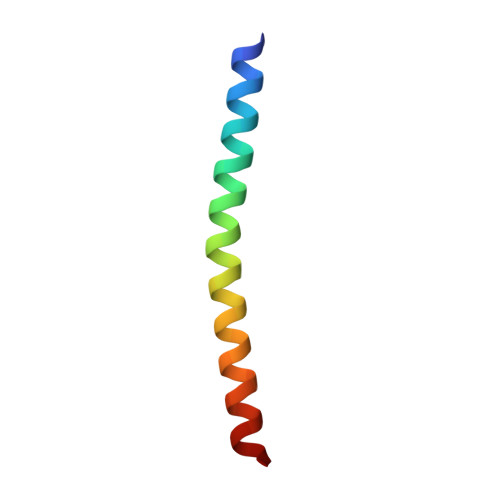Structure of the HIV-1 gp41 Membrane-Proximal Ectodomain Region in a Putative Prefusion Conformation.
Liu, J., Deng, Y., Dey, A., Moore, J., Lu, M.(2009) Biochemistry 48: 2915-2923
- PubMed: 19226163
- DOI: https://doi.org/10.1021/bi802303b
- Primary Citation of Related Structures:
3G9R - PubMed Abstract:
The conserved membrane-proximal external region (MPER) of the HIV-1 gp41 envelope protein is the established target for very rare but broadly neutralizing monoclonal antibodies (NAbs) elicited during natural human infection. Nevertheless, attempts to generate an HIV-1 neutralizing antibody response with immunogens bearing MPER epitopes have met with limited success. Here we show that the MPER peptide (residues 662-683) forms a labile alpha-helical trimer in aqueous solution and report the crystal structure of this autonomous folding subdomain stabilized by addition of a C-terminal isoleucine zipper motif. The structure reveals a parallel triple-stranded coiled coil in which the neutralization epitope residues are buried within the interface between the associating MPER helices. Accordingly, both the 2F5 and 4E10 NAbs recognize the isolated MPER peptide but fail to bind the trimeric MPER subdomain. We propose that the trimeric MPER structure represents the prefusion conformation of gp41, preceding the putative prehairpin intermediate and the postfusion trimer-of-hairpins structure. As such, the MPER trimer should inform the design of new HIV-1 immunogens to elicit broadly neutralizing antibodies.
Organizational Affiliation:
Department of Biochemistry, Weill Medical College of Cornell University, New York, New York 10021, USA.
















